Cataloging-in-Publication Data has been applied for and may be obtained from the Library of Congress.
Edited by Howard W. Reeves
Published in 2020 by Abrams Books for Young Readers, an imprint of ABRAMS. All rights reserved. No portion of this book may be reproduced, stored in a retrieval system, or transmitted in any form or by any means, mechanical, electronic, photocopying, recording, or otherwise, without written permission from the publisher.
Abrams Books for Young Readers are available at special discounts when purchased in quantity for premiums and promotions as well as fundraising or educational use.
Special editions can also be created to specification. For details, contact specialsales@abramsbooks.com or the address below.
Abrams is a registered trademark of Harry N. Abrams, Inc.
When we think about the history of the United States since the start of the twentieth century, a range of events come to mind:

Conventional Power. American soldiers battle Iraqi insurgents in 2004.
What does this list tell us? Well, almost half of it is wars, which maybe shouldnt come as a surprise. Were often taught that history revolves around wars, because wars decisively change the path of history. In a war, power belongs to the politicians who declare war, and to the generals who wage the battles.
In the twentieth century alone, 187 million people died in wars around the world as armies clashed again and again.
But what about the other events here? A couple relate to technology and innovation. Almost all of the rest involve civilians claiming power for themselves, and doing so violently, by taking the lives of others, through assassinations or terrorism.
Does that mean history is mostly violence?
If the answer is yes, then are you powerless to shape the future if youre not a politician or a general or someone willing to take someone elses life?
Here are two other major events from the same time period: the ratification of the Nineteenth Amendmentgranting women suffrage, the right to votein 1920, and the passage of the Civil Rights Actoutlawing racial segregationin 1964. These events changed millions of lives. One finally gave half the population a voice; the other ended decades of legal, institutionalized racism.
History is more than wars and violence.
In fact, history has often been forged through conflicts of a different sort, when huge numbers of people banded together to fight and sacrifice for their side, without ever joining a conventional army or resorting to violence. Incredible individualswho were not politicians or generalsled these movements.
In the case of the Nineteenth Amendment, the people who fought were mostly women. They had almost no official voice in the political process, and no armed soldiers on their side. But eventually, these women overpoweredand eventually persuadedan American president and a majority of the countrys male elected officials to back their cause.
The people who fought for the Civil Rights Act were mostly African Americans. Discriminated against and marginalized by the very racism they opposed, these men and women were regularly denied the vote. Often, they were violently attacked. But in the end, they convinced great numbers of white Americans (and the white politicians who represented them) to reject the racism that once ruled their lives.
In both conflicts, one side was excluded from governance and had no conventional weapons, yet this side prevailed each time, and without shedding their opponents blood.
So what was the source of their remarkable power?
Nonviolent activism.
Alice Paul led the final push for the Nineteenth Amendment. She was a Quaker woman with no access to the voting booth. Martin Luther King Jr. led the call for the Civil Rights Act. He was a Baptist minister who held no public office and couldnt drink from the same water fountains as whites.
Both Paul and King were activists who inspired, mobilized, and organized vast numbers of people to unite in order to struggle and sacrifice together for their causes. Operating outside of government institutions and rejecting violent methods, womens suffrage and the civil rights movement used nonviolent resistance to transform their peoples weakness into strength and change the course of history.
Nonviolent activism isnt just an American phenomenon. Perhaps the greatest non violent struggle of all, the Indian independence movement, led by Mohandas K. Gandhi, ended nearly two hundred years of British colonial rule and brought freedom to 300 million people without a bloody war of independence. Nonviolent struggles also helped overthrow total itarian regimes shaped by the Soviet Union, one of the largest, most powerful, and most repressive countries ever.
Many times in the past, nonviolent resistance has prevailed, shifting the course of history as much as a warwithout firing a single shot.
So maybe weve been getting our history wrong.
Or at least very incomplete.
But what exactly is nonviolent activism? Is any activism that rejects violence automatically considered non violent activism?
No.
Nonviolent activists employ disruptive, risky tactics that challenge those in power and interrupt the way things normally workwithout taking up arms.
As well see in the chapters that follow, nonviolent activists can call on all sorts of techniques and tactics to advance their cause. Gene Sharp, a scholar of nonviolent activism, put together a list of all the methods that have been used in nonviolent struggles around the world.
How many entries made his list?
One hundred and ninety-eight!
Protests, strikes, boycotts, and intentional law-breakingwhats called civil disobedienceare just some of the best-known methods nonviolent activists can use. But whatever techniques they eventually choose, their successful application first requires the organization and mobilization of large groups of people willing to challenge the powers that be.

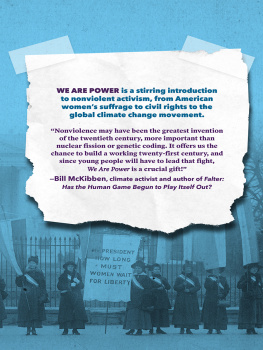

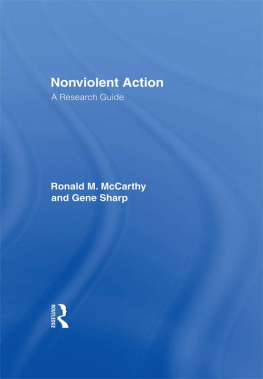
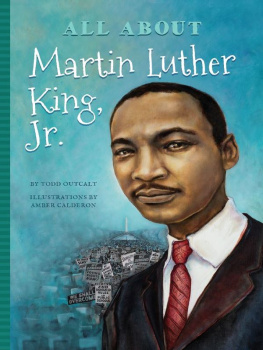

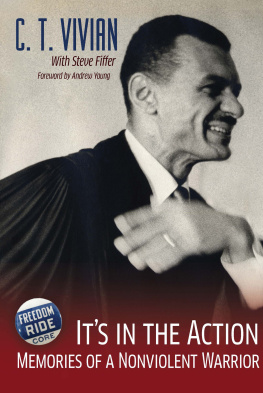
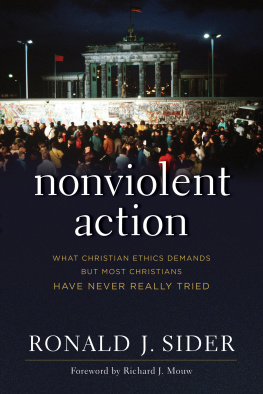
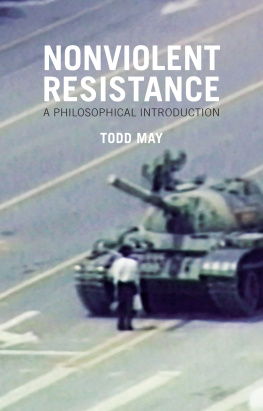
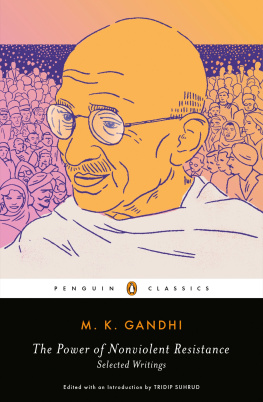
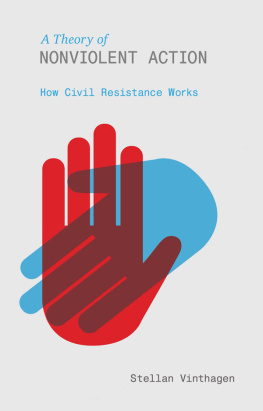



 ABRAMS The Art of Books 195 Broadway, New York, NY 10007 abramsbooks.com
ABRAMS The Art of Books 195 Broadway, New York, NY 10007 abramsbooks.com


